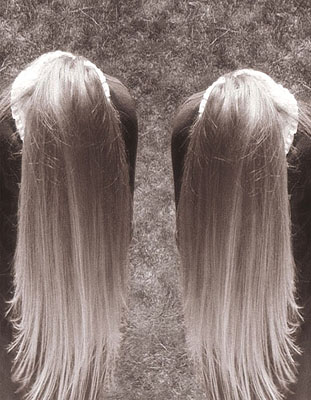
Stills Gallery 36 Gosbell Street, Paddington NSW 2021 Sydney Australie
Pat Brassington is well known as one of Australia's leading photo-media artists. Over the past twenty years she has exhibited widely both in Australia and overseas. Her inclusion in the Biennale of Sydney 2004 and a major survey of her work at the Ian Potter Gallery, University of Melbourne in 2003 attest to her standing in Australian contemporary art. In this exhibition we will present some of her most recent creations alongside a selection of early works.
It is interesting to follow the trajectory of Brassington's work from the 1980s to the present. Throughout her art practice she has appropriated images as well as mined her own archive. Using a familiar range of everyday items she conjures up a plethora of feelings; desire, disgust, madness and abandon to name a few. The settings in which we find her subjects are, for the most part, domestic. Brassington refreshingly refrains from using the trusty backdrop of the Australian landscape.
Her earlier works seem clearly influenced by the language of cinema, in their analogue forms and in the frisson created by a collision of images in series form. Torsion 1992, for example, (included in this exhibition) comprises six gelatin silver photographs showing a group of tormented and twisted bodies. The focus on fabric and feet in Torsion recurs throughout Brassington's work.
From the late 1990s she has employed more digital techniques, morphing her original elements into individual and enigmatic images. There has been a shifting colour palette over the years too, from early black and white photographs through a subversive range of pinks (think tongues and flesh and fabric) to a muted sepia range in series such as Cambridge Road 2007 and recent works like The Best Move 2008 shown here.
The ambiguous and uncanny bodies depicted in Brassington's images are usually in motion or transition rather than obediently presenting themselves to be photographed. In Sweet Inspirations, 2008 for instance, two young girls confound the viewer (and the traditional role of subject) by looking towards the ground so that all we see are two long manes of hair atop bodies.
Pete Volich's subject matter favours everyday materials, scenarios and forms derived from the urban and suburban environment. Of interest to him is a re-valuing or re-claiming of that which is ordinary. He is influenced by Memento Mori and Vernacular photography and in how they have influenced the physicality and interpretation of the photographic form.
In his latest body of work Volich uses the site of Hackney Marsh, which is located directly adjacent to the new Olympic Park for the 2012 London games. Hackney Marsh is an area of grassland on the western bank of the River Lee in the London Borough of Hackney. The area is renowned for its ethnic, political and religious diversity. Activity within the marsh dates back to Roman times, where the river Lee was used as a trading port. It was originally a true marsh, but was extensively drained from medieval times, and raised to the ground by air raids during World War II. The marsh now acts as a reprieve from the sprawling city of London, offering playing fields, regenerated forests, and walkways for the local community to access.
Using photos and video, Volich has documented the underbelly of the marsh over the past ten months. He has made subtle intrusions into the landscape, using found detritus to construct poetic vignettes. The resulting work is a psycho-geographical portrait of the marsh, a document of its present state before it is consumed by the economic and social redevelopment of the Olympic spectacle.
This re-envisioning of detritus left behind in the quest for heroics is reminiscent of his series Tales from the rear view mirror, here we go again 2006, which featured framed sporting memorabilia and snapshots. These works played with both the idea of the antihero in a culture fixated with competition and masculinity, and the tradition of memento mori, which explores the sentiments and memories held within personal objects. In 2012:E9E10 Volich considers, and almost pre-mourns the social and cultural capital of the marsh before it disappears.
Pete Volich recently lived in London where he undertook a Skills & Development Award from the Australia Council for the Arts and was mentored by the acclaimed film and video artist Isaac Julian. Pete has been selected for the Citigroup Photographic Portrait Prize at the Art Gallery of NSW and shortlisted for the RIPE ANZ Art Australia Award and the Helen Lempriere Travelling Art Scholarship. He has exhibited throughout Australia as well as in Germany and Ireland.


